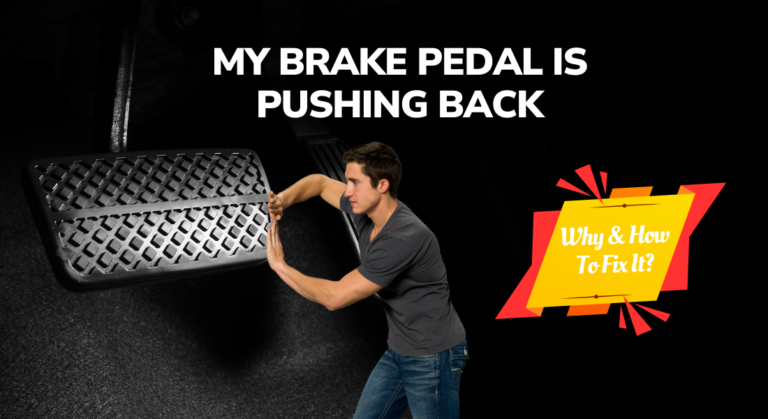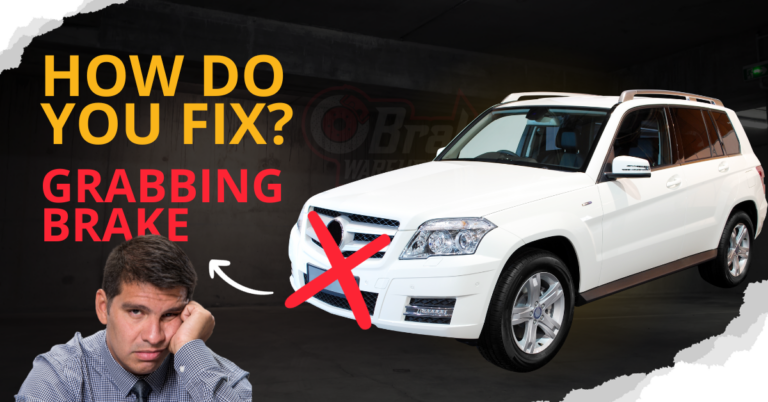Air in Brake Lines After Bleeding: What Causes & How to Fix?
The air in the brake line system affects its efficiency leading to a faulty braking system.
Air in the brake lines creates a compressible void, causing the piston to travel a longer distance to brake the vehicle. If you experience spongy and soft brake pedals after bleeding, it’s due to possible wear and tear of the braking system or improper bleeding methods that may retain some air in the brake lines.
This article explains the possible reasons for air in brake lines after bleeding and solutions to those problems. In addition, we shall review the bleeding methods to ensure proper bleeding step-by-step.
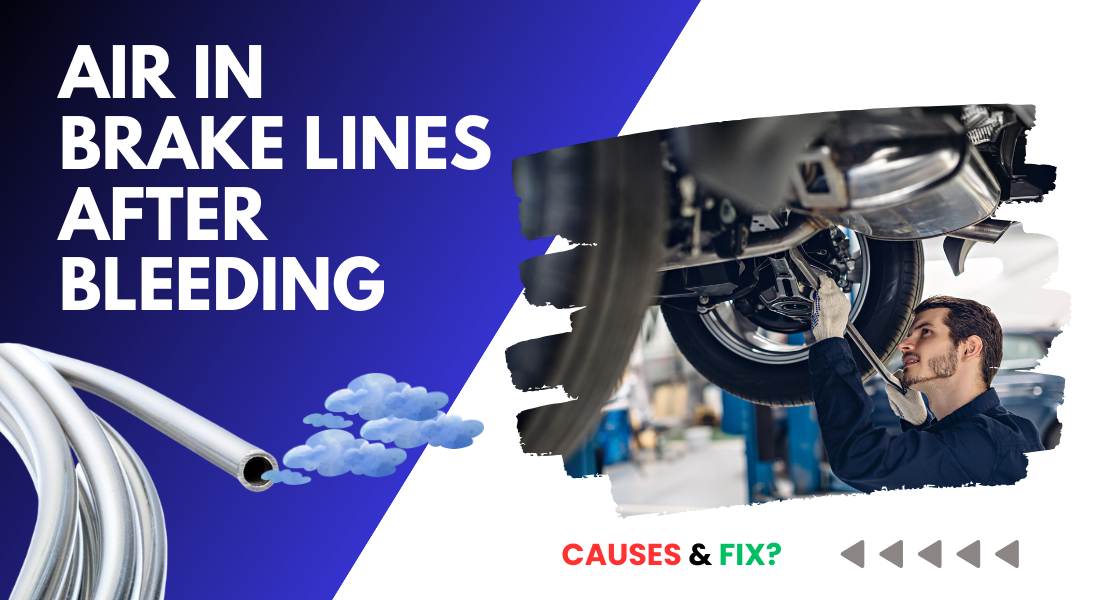
Reasons For Air In Brake Lines After Bleeding
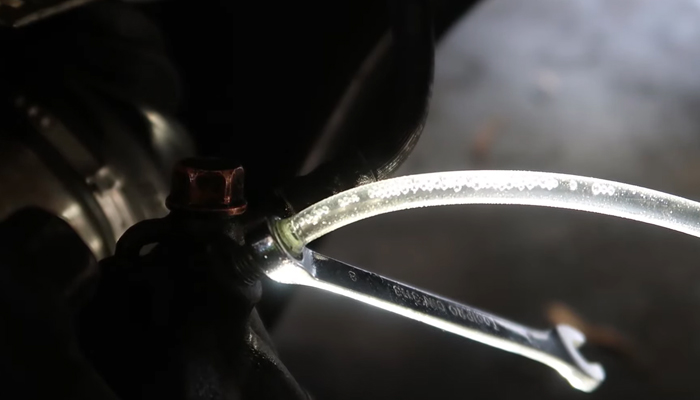
There are several reasons behind the air in the brake line after bleeding. The major reasons include as follows.
- Vulnerability of the braking system
- The Hygroscopic nature of the braking system
- Wear and tear in the braking system
- Inefficient beeling methods.
Let’s discuss the main reasons for air in brake lines in detail and how to eliminate it from the system for brake efficiency.
1. Vulnerability Of The Braking System
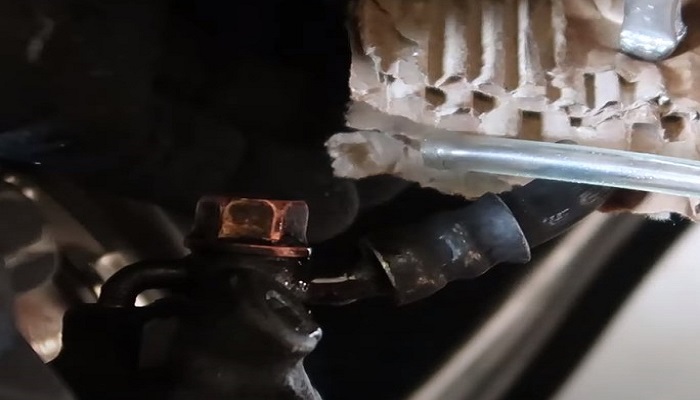
The braking system is vulnerable because it is opened frequently when checking and adding brake fluid. The bleeding valves and screws are also opened when changing the wheel pads, linings, and rings.
These opening and closing instances cause air to enter the brake lines even after bleeding.
What To Do?
Open the fluid reservoir when topping the brake fluid or check the quality and the level of the fluid. Avoid leaving the fluid reservoir open, as air may be sucked into the brake lines.
Also, ensure the bleeding screws and valves are tightly closed to avoid brake fluid leakage.
2. The Hygroscopic Nature Of Brake Fluids
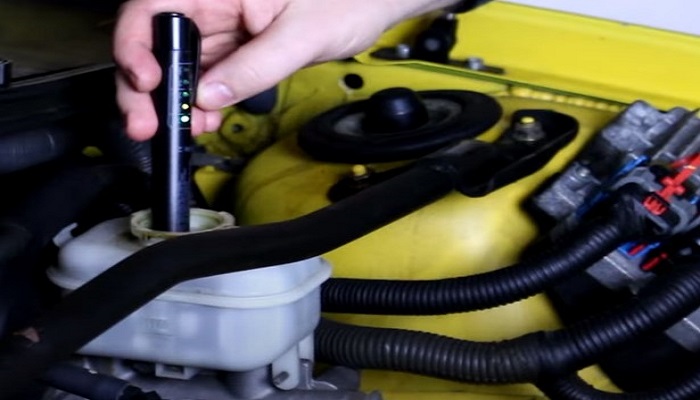
Brake fluid is hygroscopic in nature, and thus it absorbs moisture from the surrounding air, especially during the rainy and cold seasons. Cumulative absorption of moisture causes builds of moisture in the brake lines.
When braking pressure is applied, the temperatures rise inside the system and boil the moisture-producing steam. When compressed, steam creates air pockets and gaps that lower the system’s efficiency.
What To Do?
Use quality brake fluid (our pick) that meets the required standards for efficiency purposes. Keep the brake system dry and moisture-free since brake fluid is hygroscopic.
Read Also: Brake Pedal Goes to Floor after Bleeding? (4 Causes)
3. Wear And Tear Of The Braking System
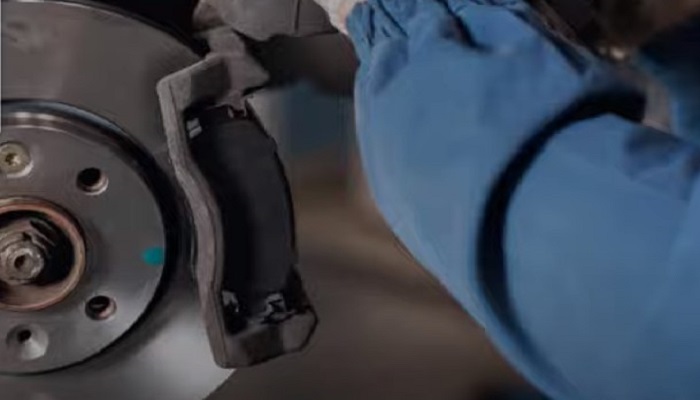
The braking system components, such as the rubber pads, wear out with time and may cause air to leak into the system. The wear and tear is a result of heat generated from the high pressure applied during the braking process.
Other parts that get worn out include the brake pads, linings, rotors, and calipers, and they may cause air to leak into the system.
What To Do?
To reduce the heating effect from the pressure build-up in the brakes, use the right type of brake fluid as prescribed by the manufacturer. Also, inspect the brake system regularly for any leakage and replace a damaged brake line instead of repairing it.
To replace the brake line, follow the steps below.
- Remove the cap, brake fluid reservoir, wheel, and tires using a jack. Then remove the brake calipers, hoses by unscrewing them from their pistons.
- Allow the brake fluid to empty into a clean container for reuse.
- Remove the clips and mounts holding the damaged brake line in place.
- Remove the broken or damaged brake lines and dispose of them appropriately.
- Carefully line the new brake line and hold them into place with mounting screws.
- Replace the brake calipers and hoses by screwing them into position on their pistons.
- Bleed the brake lines and refill them with new brake fluid.
4. Inefficient Bleeding Methods
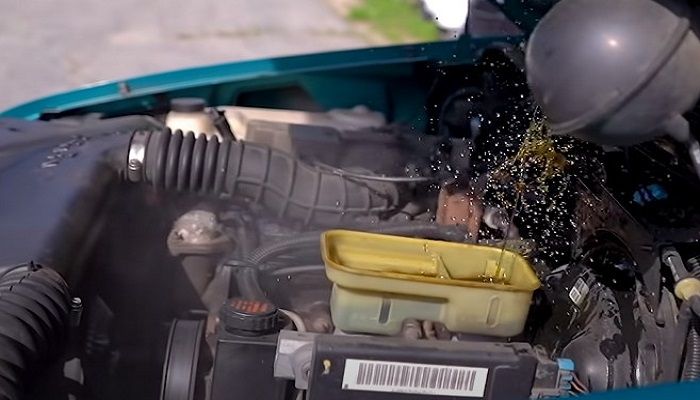
The bleeding process aims to eliminate air in the system, but this is not always the case, as some air is retained in the system. Bleeding methods, such as vacuum bleeding and reverse bleeding, may cause air to enter the system if not properly connected.
What To Do?
Properly bleed the brake lines to prevent air build-up when bleeding. You can consult a professional mechanic to bleed the brake lines for you.
Since improper bleeding is the main cause of air in the brake lines, let’s look at the methods and steps for efficient bleeding.
Read Also: No Brake Pressure after Bleeding – Why & How To Fix It?
How To Remove Air In Brake Lines? Methods Of Bleeding
Proper bleeding is a must in eliminating air in the brake lines. Therefore, we must look at the different methods of bleeding coupled with good braking system maintenance practices that will help solve the problem of air in brake lines.
1. Bleeding By Gravity
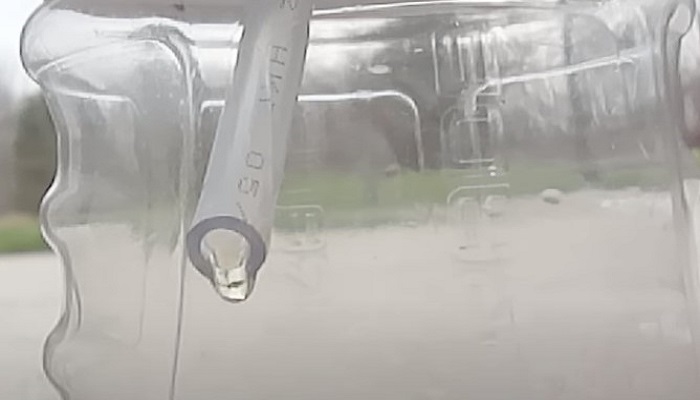
Using gravity to bleed your brakes is the simplest one-person method as it applies the laws of gravity to drain old brake fluid at the bottom as the new fluid gets in at the top. Follow the steps below to bleed by gravity.
- Open the cap on the reservoir tank on the master cylinder.
- Inspect the level of brake fluid and add more fluid to fill the reservoir
- Open the four bleeding screws at the wheel cylinder
- Allow the brake fluid to flow with gravity eliminating the air pockets
- Keep the reservoir tank cap open to allow atmospheric pressure to force the fluid out
- Collect the brake fluid in clean containers for reuse or other mechanical purposes
Once you collect brake fluid equivalent to the one you added, you have completed one bleeding cycle. Keep adding more brake fluid as you close the bleeding screws tightly. Close the reservoir cap and ensure it is airtight.
Read Also: Bad Master Cylinder or Air in Brake Lines? Find The Culprit
2. Use Of A Vacuum Bleeder
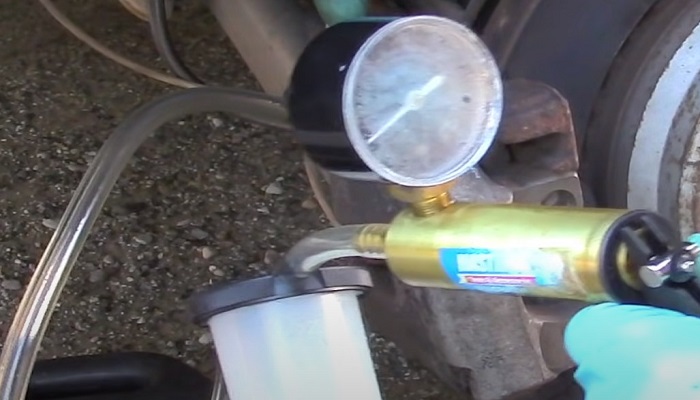
This method uses a vacuum pump that eliminates air in the brake lines. It would be best if you have assistance from a partner to pump the brake for efficient bleeding.
Below is the procedure for using a vacuum bleeder to remove air from the brake lines.
- Connect the vacuum pump to the bleeder valve beneath the wheel cylinder and ensure a tight seal.
- Pump the vacuum to a pressure gauge of around 20 psi.
- Open the valve to allow the brake fluid to flow through the pump as air is sucked.
- Get an assistant to pump the brake pedal, which pushes the brake fluid from the reservoir. Continue the vacuum bleeding process until the brake pedal feels firm.
Watch this video on how to vacuum bleed your brake line.
3. Bleeding Brakes By Pumping The Pedal And Holding
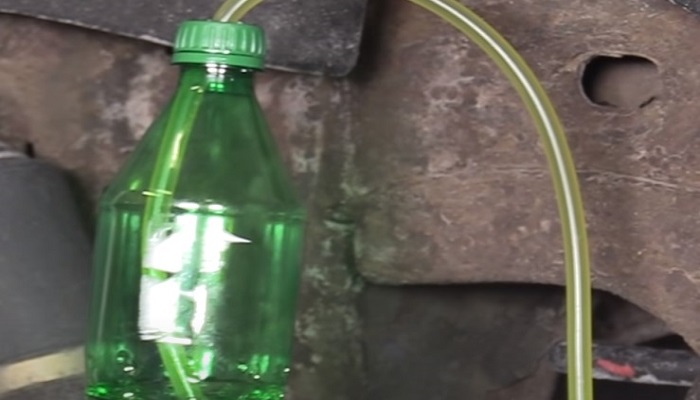
The brake pumping and holding methods are unreliable for vehicles with ABS and require assistance from a partner. Follow these simple steps to bleed your brakes.
- Tell your partner to press the brake pedal slowly and then hold it midway.
- On the other end, you open the bleeder valve to let the fluid out.
- You will notice air bubbles escaping through the valve, and the brake pedal will go down.
- Close the bleeder valve tightly and repeat the process several times until the brake pedal feels firm.
Read Also: Do I Need to Pump The Brakes After Adding Brake Fluid?
4. Reverse Brake Bleeding
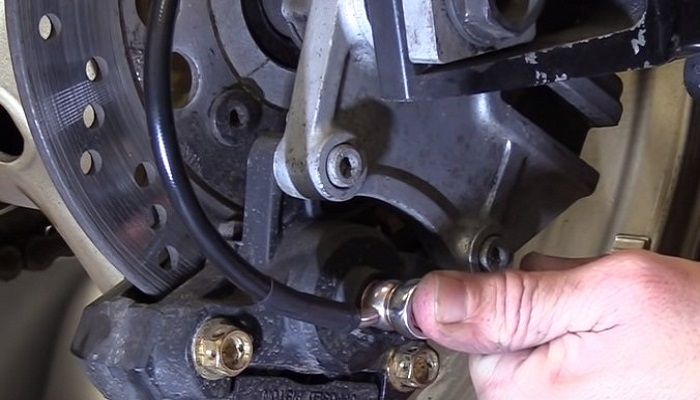
The reverse brake bleeding method is the fastest and most efficient method of removing air from the brake lines. This method works well with the Automatic Braking system and requires an injector pump to push brake fluid up the system.
Follow these steps to bleed your vehicle’s brake system.
- Jack the vehicle and remove the wheels for a clear view of the bleeder nozzle/screw.
- Open the bleeder screw to flush the old oil first.
- Connect the injector pump at the bottom to the bleeder screw. Ensure the reservoir tank is open.
- Start pumping the new brake fluid from the bottom until the main reservoir tank is full.
- Close the reservoir cap when full, and then close the bleeder valve. You can now remove the injector pump and close the screw or nozzle.
FAQs
For a better understanding of air in brake lines after bleeding, check the frequently asked questions below to get the answers to some raised questions.
Which Is The Best Bleeding Method To Remove Air In The Brake Lines?
Bleeding methods are equally efficient if properly executed. However, the reverse brake bleeding method is the best alternative as it eliminates air using an injector pump. It applies the reverse process and eliminates most of the air in the brake lines.
How Can You Slow Down Air Build Up In Brake Lines?
You can slow down the air build-up in brake lines by ensuring adequate brake fluid in the reservoir and following the maintenance and care plan. Inspect the bleeder screws and ensure they are air-tightly closed.
How Often Should You Bleed Your Vehicle’s Brake Lines?
The standard timeline for bleeding your brake lines is every 2 to 3 years, depending on the frequency of usage of the car. However, when pressed, you can bleed your brake lines when your brake pedals feel spongy and soft.
Read Also: How To Flush and Bleed Brake Systems?(Step By Step)
Conclusion
Air may get into the brake lines through leakages or internal processes that cause steam production, generating air pockets. Due to mechanical inefficiency, bleeding processes may not entirely remove air from the brake lines.
If the brake pedals feel spongy and soft, consult a mechanic, and bleed the braking system properly to remove any air left in the system. Ensure proper care and maintenance of your vehicle by servicing frequently to keep the braking system clean.

Meet Zayan, the mechanical genius behind the highly acclaimed brakes problems and solutions website. With over a decade of hands-on experience in the automotive industry, Zayan has become a trusted authority in the realm of brake systems.
His passion for cars, coupled with his expertise in solving complex brake-related issues, has earned him a devoted following of car enthusiasts, mechanics, and everyday drivers seeking reliable guidance.

